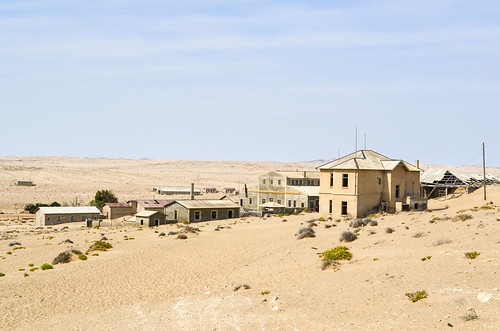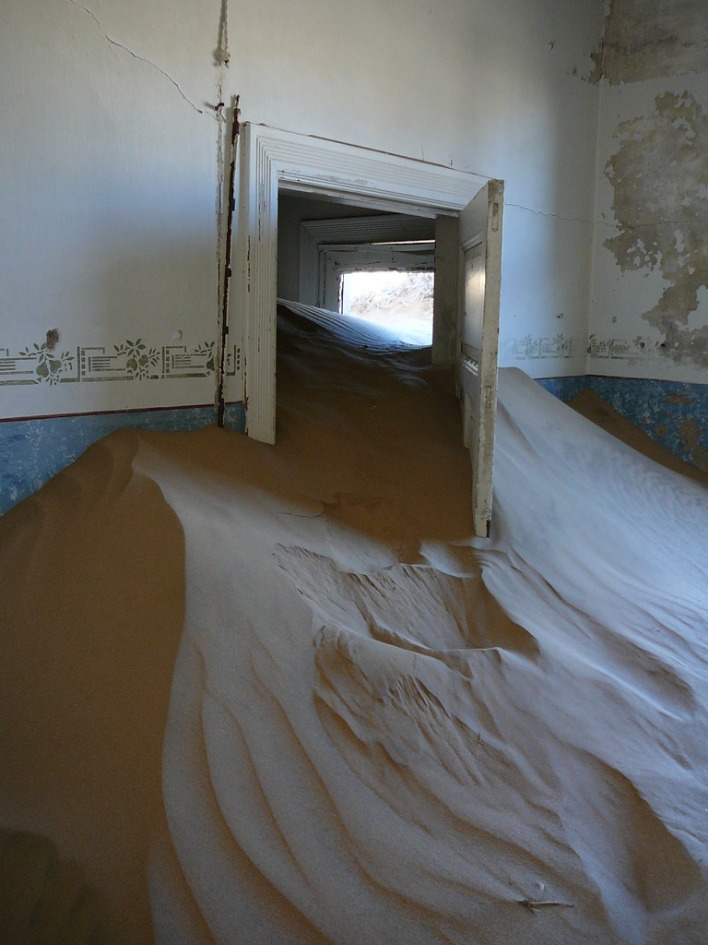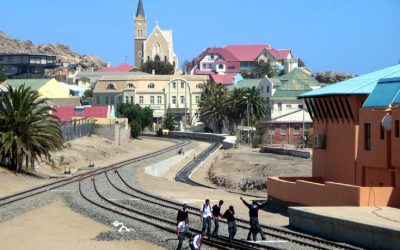Overview of Ghost Towns in Namibia
Namibia is home to a variety of ghost towns that serve as intriguing remnants of its rich historical past. These abandoned settlements, once bustling with miners, traders, and settlers, now stand as silent witnesses to economic shifts and changing industries. Exploring these ghost towns offers a fascinating glimpse into Namibia’s colonial era, diamond rush history, and the transient nature of human settlement in the region.
Historical Background
Namibia is home to several ghost towns that serve as remnants of its rich historical past, particularly from the colonial era and the age of mineral discovery. These abandoned settlements offer a glimpse into the country’s past economic booms and subsequent declines, often tied to mining activities or shifting trade routes.
Historically, many ghost towns in Namibia date back to the late 19th and early 20th centuries, when the discovery of minerals such as diamonds and uranium prompted a rush of settlers, miners, and entrepreneurs. Towns like Kolmanskop, once a thriving diamond mining community, flourished during Namibia’s diamond boom but were eventually abandoned when the deposits were exhausted or became unprofitable. These towns now serve as hauntingly beautiful reminders of Namibia’s colonial exploitation and economic cycles.
- During the German colonial period, several towns were established to support mineral extraction and administrative control, many of which were later abandoned after economic shifts.
- The decline of these towns was often due to depletion of resources, changing mining technologies, or migration to more prosperous regions.
- Today, these ghost towns attract tourists, historians, and photographers interested in Namibia’s history and the striking visuals of abandoned architecture and landscapes.
Factors Leading to Abandonment
Ghost towns in Namibia are remnants of once-thriving settlements that have been abandoned and left to decay over time. These towns often reflect the country’s rich history of mineral exploration, colonial influence, and economic shifts. Visitors to Namibia can explore these deserted areas to gain insight into the country’s past and the factors that led to their abandonment.
Several factors have contributed to the rise and fall of ghost towns in Namibia. Economic decline in mining industries, such as copper, tin, and uranium, caused many towns to lose their primary source of income, prompting residents to relocate in search of better opportunities. Environmental challenges, including droughts and desertification, made living conditions difficult, further accelerating abandonment. Additionally, changing trade routes and the development of more modern infrastructure reduced the strategic importance of these towns, leading to their decline. Colonial policies and resource depletion also played roles in shaping these deserted landscapes, making ghost towns an intriguing window into Namibia’s history of economic and social transformation.
Geographical Distribution
Ghost towns in Namibia are abandoned settlements that often originated during periods of economic prosperity, such as mineral booms, but were later deserted due to various factors like resource depletion or economic decline. These towns provide a glimpse into Namibia’s historical phases of mining and settlement development.
Geographically, Namibia’s ghost towns are predominantly located in regions rich in mineral deposits, especially within the central and northern parts of the country. The Namibian towns of Kolmanskop, Bogenfels, and Start Bay are notable examples, situated near former diamond, copper, and uranium mining areas. Many of these abandoned settlements are found in the Namib Desert and surrounding arid regions, where harsh environmental conditions contributed to their decline. Their distribution highlights areas once characterized by rapid economic activity, now silent reminders of Namibia’s storied mining history.
Prominent Ghost Towns in Namibia
Namibia is home to several intriguing ghost towns that tell the story of its historical economic shifts and colonial past. These abandoned settlements often serve as remnants of the diamond rush and mining booms from the early 20th century, offering a glimpse into Namibia’s rugged history. Some of the most prominent ghost towns include Kolmanskop, Bogenfels, and Elizabeth Bay.
Kolmanskop is perhaps the most famous ghost town in Namibia. Located near Lüderitz, it was once a thriving diamond mining town in the early 1900s. When diamond deposits became depleted, the town was abandoned, leaving behind a haunting landscape of deserted houses and deserted streets engulfed by the shifting desert sands. Today, Kolmanskop is a popular tourist attraction and a striking example of a ghost town reclaimed by nature.
Bogenfels is another notable site, although it is less of a typical ghost town and more of a remote, abandoned location with striking natural formations. It is part of the Namib Desert and offers a unique landscape where remnants of abandoned mining infrastructure can sometimes be found, reflecting Namibia’s mining history.
Elizabeth Bay was once a rich copper mining town situated on the coast of Namibia. It experienced a brief period of prosperity before being deserted, leaving behind ruins that stand as silent witnesses to Namibia’s mining boom era. The remnants of the town, including old buildings and mine shafts, attract explorers and history enthusiasts alike.
These ghost towns highlight Namibia’s transition from a resource-rich economy to a modern state and remain important cultural and historical sites. They continue to fascinate visitors with their eerie beauty and stories of a bygone era.

Historical Significance and Cultural Impact
Ghost towns in Namibia offer a fascinating glimpse into the country’s rich history and cultural heritage. These abandoned settlements stand as silent witnesses to past economic booms and societal changes that have shaped Namibia’s landscape. Exploring their remnants reveals stories of migration, industry, and community life, highlighting the enduring significance and cultural impact of these deserted places on Namibia’s collective memory.
Colonial Past and Mining Boom
The ghost town in Namibia exemplifies the remnants of a once-thriving colonial past and a significant mining boom that shaped the region’s history. During the early 20th century, the town’s development was driven by mineral discoveries, particularly during the diamond and uranium prospecting eras, which attracted settlers and investors. This period marked a pivotal chapter in Namibia’s colonial history, illustrating the influence of European powers on resource exploitation and territorial expansion. Over time, fluctuations in commodity prices, depleted resources, and changing economic priorities led to the decline of the town, transforming it into a ghost town.
Its cultural impact persists through the physical remnants and stories that reflect the diverse communities that once inhabited it. The abandoned infrastructure and artifacts serve as a reminder of the colonial legacy and the complex socio-economic dynamics of the time. Today, the ghost town attracts tourists and historians interested in exploring Namibia’s mining history and understanding the broader implications of colonialism and economic booms on local populations and landscapes. As a symbol of both prosperity and decline, it offers valuable insights into Namibia’s development and its historical connection to global resource markets.
Influence on Local Communities
The ghost town in Namibia holds significant historical and cultural importance as a relic of the country’s colonial past and rapid economic changes. It serves as a tangible reminder of the era when mineral discoveries and mining booms led to the rise and fall of once-thriving settlements. These sites offer insight into the lives of early settlers, workers, and their communities, preserving stories that are integral to Namibia’s heritage.
Culturally, ghost towns contribute to Namibia’s narrative of resilience and transition, reflecting the country’s journey from colonialism to independence. They attract tourists and history enthusiasts, fostering a sense of identity and pride among local communities, while also emphasizing the importance of preserving historical sites for future generations.
In terms of influence on local communities, ghost towns often serve as educational and heritage sites that promote awareness of Namibia’s historical development. They can stimulate local economies through tourism, providing opportunities for community involvement and sustainable practices. Moreover, they act as symbols of change, reminding residents and visitors alike of Namibia’s complex past and its ongoing evolution as a nation.
Preservation Efforts and Heritage Sites
Ghost towns in Namibia are remnants of a bygone era that reflect the country’s historical and economic development, particularly during periods of mineral booms such as the diamond and uranium rushes. These sites offer a glimpse into the lives of early settlers and workers, serving as tangible links to Namibia’s colonial past and the rapid growth experienced in specific regions. Their cultural impact extends beyond history, inspiring stories, legends, and local folklore that continue to captivate visitors and residents alike.
Preservation efforts for Namibia’s ghost towns aim to safeguard their historical significance while promoting tourism and education. Various initiatives focus on restoring buildings, maintaining archaeological sites, and providing informative tours to raise awareness about their heritage. By doing so, these sites not only preserve their unique architecture and historical artifacts but also contribute to the broader understanding of Namibia’s diverse cultural landscape.
Many of these ghost towns are designated as heritage sites, receiving recognition and protection from national authorities. These designations help ensure their conservation and facilitate sustainable tourism practices that benefit local communities. Through these efforts, Namibia’s ghost towns remain vital cultural treasures, offering insights into the country’s complex history and serving as symbols of resilience and transformation. They continue to attract history enthusiasts, researchers, and tourists eager to explore Namibia’s pioneering past and its enduring legacy.
Tourism and Economic Potential
Ghost towns in Namibia showcase the intriguing intersection of history and tourism, offering unique opportunities for economic growth. These abandoned settlements attract visitors interested in exploring the remnants of the past, boosting local businesses and fostering sustainable development. Leveraging the allure of Namibia’s ghost towns can unlock significant economic potential while preserving the cultural heritage of these once-thriving communities.
Tourist Attractions and Destinations
Ghost towns in Namibia offer a unique glimpse into the country’s rich history and economic past, attracting tourists interested in exploring abandoned settlements and learning about their stories. These sites often hold a nostalgic charm, showcasing abandoned mining operations, old infrastructure, and remnants of a bygone era, which can be both educational and intriguing for visitors. The exploration of ghost towns can stimulate local economies through heritage tourism, encouraging the development of guided tours, local crafts, and hospitality services.
Popular ghost towns such as Kolmanskop and Elizabeth Bay are significant tourist attractions, drawing visitors from around the world eager to walk through sandy streets and explore the deserted buildings. These destinations offer a mix of historical intrigue and natural beauty, with nearby desert landscapes providing excellent photo opportunities. Such attractions not only boost tourism but also promote the conservation of Namibia’s cultural heritage, creating economic opportunities for local communities.
Namibia’s ghost towns serve as compelling destinations for adventure travelers and history enthusiasts alike. They highlight Namibia’s economic transition from resource-driven industries to diverse sectors, and their preservation helps promote sustainable tourism practices. Overall, these sites have the potential to enhance Namibia’s tourism sector, generate employment, and contribute significantly to the nation’s economic development while offering visitors an unforgettable experience through their mysterious and historic ambiance.
Challenges in Developing Ghost Town Tourism
Ghost town tourism in Namibia presents a unique opportunity to boost the local economy by attracting visitors interested in history, archaeology, and adventure. These abandoned sites offer a glimpse into Namibia’s past, including its colonial history and past economic booms and busts, which can be leveraged to create sustainable tourism experiences. Developing ghost towns as tourist destinations can generate employment, stimulate small businesses, and promote cultural preservation.
However, there are notable challenges to developing ghost town tourism in Namibia. Many sites are located in remote areas with limited infrastructure, making accessibility difficult for travelers. Preservation and conservation of these sites require significant investment, and there is a risk of damage due to increased foot traffic. Additionally, balancing tourism development with the preservation of the ghost towns’ historical integrity is essential to maintaining their authenticity and appeal. Ensuring safety and providing adequate facilities also require careful planning to attract a broader range of tourists while protecting the sites.
Potential for Cultural and Historical Tours
The ghost town of Namibia offers remarkable opportunities for tourism and economic development, particularly through cultural and historical tours. Its hauntingly preserved structures and intriguing past attract travelers seeking unique experiences, fostering local businesses and job creation.
- Rich Cultural Heritage: The town’s history provides a compelling narrative for guided tours, attracting history enthusiasts and school groups.
- Architectural Significance: Preserved buildings offer insights into early settler life and colonial history, appealing to tourists interested in architecture and history.
- Adventure Tourism: Exploring abandoned sites and rugged landscapes promotes adventure tourism, boosting local hospitality and transportation sectors.
- Community Engagement: Developing tourism infrastructure encourages community participation, empowering residents to benefit economically from visitor spending.
- Potential for Cultural Festivals: Organizing festivals and reenactments can further enhance visitor interest and generate revenue.
- Historic Preservation: Restoring and maintaining key sites will enhance the town’s appeal and ensure sustainable tourism development.
- Marketing Strategies: Promoting the town through digital media and partnerships can attract international and regional tourists.
- Training and Education: Equipping locals with hospitality and tour guiding skills will improve service quality and visitor satisfaction.
- Eco-Tourism Opportunities: Combining cultural tours with eco-friendly activities to preserve the environment while attracting eco-conscious travelers.
Environmental and Preservation Considerations
Exploring ghost towns in Namibia offers a fascinating glimpse into the country’s bygone eras and the factors that led to their abandonment. Environmental and preservation considerations play a crucial role in understanding how these historic sites can be protected while respecting the natural landscape around them. Balancing human history with ecological sustainability ensures that these ghost towns remain valuable cultural landmarks for future generations to study and appreciate.
Erosion and Natural Decay
Environmental and preservation considerations are crucial when studying the ghost towns of Namibia, as these sites often face natural decay and erosion that threaten their historical integrity. The arid desert climate, characterized by intense heat, occasional heavy rains, and shifting sands, accelerates the deterioration of structures and artifacts left behind. Proper management and conservation efforts are needed to prevent irreversible damage to these remnants of Namibia’s past, ensuring they remain as cultural and historical markers for future generations.
- Natural decay caused by weathering processes can weaken building materials such as wood, adobe, and metal, leading to structural collapse.
- Erosion from wind and rain gradually removes soil and sand deposits, exposing foundations and artifacts to further deterioration.
- The expansion and contraction of materials due to temperature fluctuations can cause cracking and fragmentation of structures.
- Implementing preservation measures, such as controlled access and protective coverings, can help mitigate ongoing erosion and decay.
- Monitoring environmental conditions around these ghost towns is essential for developing effective intervention strategies to safeguard these historical sites.
Conservation Policies and Initiatives
Ghost towns in Namibia, such as Kolmanskop and Elizabeth Bay, present unique challenges and opportunities related to environmental preservation and conservation. The abandonment of these areas often results in the preservation of historical structures and local ecosystems, but also requires careful management to prevent deterioration and environmental degradation. Conservation policies must balance the preservation of cultural heritage with the protection of surrounding natural landscapes to ensure sustainable tourism and local community benefits.
Initiatives in Namibia focus on integrating environmental considerations into the maintenance and promotion of ghost towns. This includes implementing eco-friendly tourism practices, regulating visitor access to minimize habitat disturbance, and conducting ongoing restoration projects that utilize sustainable materials. Additionally, conservation efforts aim to protect the fragile desert ecosystems that coexist with these abandoned settlements, preventing erosion and habitat loss.
Government agencies, in collaboration with local communities and international conservation organizations, are developing strategic policies to safeguard the integrity of Namibia’s ghost towns while promoting their historical and cultural significance. These initiatives emphasize education and awareness, encouraging responsible tourism and fostering community participation in preservation activities. Overall, a comprehensive approach that respects both environmental health and cultural heritage is essential to ensure the longevity and sustainable management of Namibia’s ghost towns.
Impact of Tourism on Preservation
The ghost town in Namibia presents a unique challenge and opportunity concerning environmental and preservation considerations. As a former settlement, it holds historical significance and attracts tourists interested in its story and atmospheric landscape. Preservation efforts must balance maintaining the site’s authenticity with protecting its fragile environment from the increasing foot traffic that tourism brings. Over-tourism can lead to deterioration of structures, littering, and environmental degradation, which threaten the site’s long-term preservation. Implementing sustainable tourism practices, such as controlled access and educational programs, is essential to minimize negative impacts. Additionally, conservation initiatives should prioritize the protection of local flora and fauna, ensuring that tourism activities do not disrupt the surrounding ecosystem. Thoughtful strategies can enhance visitors’ appreciation of the site’s cultural value while safeguarding its natural environment for future generations.
Future Prospects for Namibia’s Ghost Towns
Namibia’s ghost towns, once thriving hubs of industry and settlement, now stand silent as relics of the past. As interest in heritage tourism grows, these abandoned sites offer unique opportunities for preservation, exploration, and economic development. The future prospects for Namibia’s ghost towns could see them transformed into cultural landmarks that attract visitors from around the world, highlighting the country’s rich history and resilience.
Revitalization Projects
Namibia’s ghost towns hold significant historical and cultural value, reflecting the country’s mining heritage and colonial past. As interest in heritage tourism grows, there are increasing prospects for revitalization projects aimed at restoring these abandoned sites and transforming them into attractions that can boost local economies.
Revitalization efforts may include restoring historical buildings, developing museums, and creating guided tours that showcase the towns’ history. These projects can attract tourists, historians, and researchers, helping to generate income and preserve Namibia’s unique history.
Future prospects also involve sustainable development strategies that balance conservation with community involvement. Local communities can benefit from job creation and small business opportunities through tourism-related activities, ensuring that revitalization efforts positively impact the surrounding areas.
Government support, partnerships with private investors, and international grants could accelerate these initiatives, turning Namibia’s silent ghost towns into vibrant cultural heritage destinations. With careful planning and community engagement, these towns may once again become valuable assets in Namibia’s tourism and educational sectors.
Research and Archaeological Exploration
Future prospects for Namibia’s ghost towns are promising, as increasing interest in historical preservation and archaeological research offers opportunities to uncover their rich past. These abandoned settlements, often remnants of colonial-era mining activities and economic shifts, hold valuable insights into Namibia’s history and development. Advancements in technology, such as ground-penetrating radar and drone surveys, enhance the ability of researchers to explore these sites with minimal disturbance and greater precision.
Ongoing archaeological exploration can lead to discoveries of artifacts, structures, and environmental data that deepen understanding of early settlers, traders, and miners who once inhabited these towns. Conservation efforts, combined with tourism development initiatives, could transform ghost towns into heritage sites, attracting visitors and funding for further research. In addition, fostering partnerships between local communities, historians, and archaeologists will ensure sustainable management and preservation of these important cultural landscapes for future generations.
Balancing Development and Preservation
Namibia’s ghost towns present a unique challenge and opportunity as the country seeks to balance development with heritage preservation. These abandoned settlements, often remnants of the mining boom eras, hold significant historical and cultural value that can attract tourism and educational interests. Future prospects for these towns hinge on sustainable development strategies that respect their historical significance while fostering economic growth.
One potential approach is the categorization and selective conservation of key sites, transforming them into heritage tourism destinations. This can generate revenue and raise awareness about Namibia’s diverse history, while avoiding detrimental over-commercialization. Additionally, integrating community participation ensures that local populations benefit from preservation efforts, encouraging a sense of ownership and pride.
Advancements in infrastructure and accessibility can also play a vital role in revitalization efforts, making ghost towns more attractive and safer for visitors. However, such development must be carefully managed to prevent environmental degradation or the loss of authentic character. Collaborative initiatives involving government agencies, heritage organizations, and entrepreneurs can help develop tailored plans that prioritize both economic opportunities and the conservation of Namibia’s unique historical landscape.
Overall, the future of Namibia’s ghost towns lies in a balanced approach that leverages their historical significance for sustainable tourism and educational initiatives, while safeguarding their integrity for future generations. Thoughtful planning and community engagement will be key to ensuring these haunting remnants of the past become assets for Namibia’s cultural and economic landscape.





0 Comments